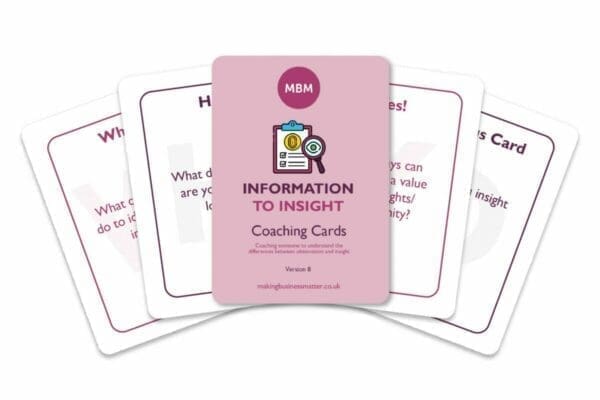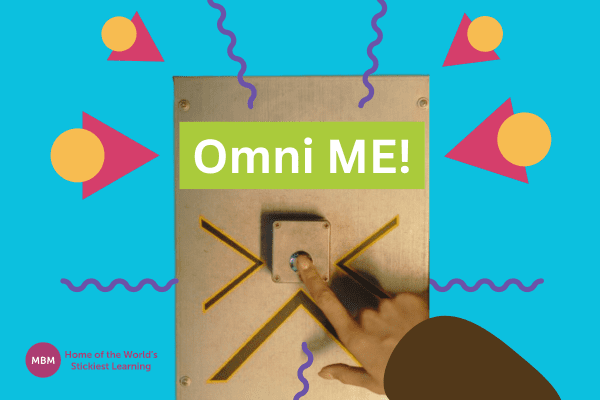Keep the Learning Experience Consistent, Wherever It Happens
Omnichannel training involves businesses grasping the omnichannel concept in training their teams. It means using different communication channels simultaneously to provide consistent learning experiences. And as this article confirms this kind of training is increasingly important in training people to lead and manage omnichannel businesses.
The bottom line is, omnichannel training doesn’t just benefit the bottom line. It also adds to the employee experience and enhances the employer brand. Furthermore, it reinforces the employee value proposition, the combination of attractive qualities that people recognise in companies, which makes them keen to join them, stay in their jobs, and grow and progress.
What is Omnichannel Training?
Expanding on what we said in the introduction, omnichannel training is a joined-up approach to training and developing people, that seeks to provide them with a seamless learning experience. That’s the case, whether they’re learning online from a desktop or mobile, by phone, or in an office or other physical location.

There Are 4 Aspects to This Type of Training:
- Consistency: You’re able to access the same content, of the same quality, wherever you engage with it.
- Personalisation: The content is delivered in different ways to suit people of different ages, cultures and so on.
- Customer-driven: Omnichannel training needs to be delivered to the employees in the form they require, at the time they require it. This involves having a ‘back end’ in place to deliver it. Specifically, omnichannel training needs IT systems and other resources to manage it.
- Data-driven decision making: Different people in the business need to know who’s accessed which parts of the training, and when the sessions are taking place.
Who Benefits From All This?
- The employees receiving the training.
- HR departments co-ordinating it.
- Individuals providing it.
- The leaders and managers who want to know who’s received what training, to help them pick people for roles and projects, and identify who needs what further training.
What Are the Benefits of Training?

Let’s go back to the basics for a moment. Whether we’re talking about omnichannel or the more ‘silo based’ multi-channel kind, training and development provide employees with additional skills, knowledge, and qualifications. All in all, businesses train and develop their staff for various reasons, including:
1 – Motivation:
Everyone wants to feel driven and happy in their work. If you’re motivated, you’re more likely to do a good job and work hard. If people receive training, chances are they’ll feel they’re valued and the business is interested in their progress, so they work harder.
2 – Employee Retention:
People are more likely to stay with a company that invests in training and developing them. Furthermore, retaining good people keeps valuable skills and experience in the business, and saves having to spend time and money replacing them.
3 – Using New Tech:
Businesses need to ensure they train their team members to use new tech, so they’re more efficient and skilled in their roles. It also makes them feel valued, contributing to motivation and retention.
4 – Increased Productivity:
Training often gives people new skills which make them better at their job. They can make products or do their job faster, and with fewer errors. This means less time is spent correcting mistakes.
Let’s look at the different types of training companies do, and see where omnichannel training fits in.
The 3 Types of Training:

1. Induction:
This covers such things as meeting the other employees, having a tour of the head office building and other locations, familiarisation with IT and other systems, and learning company rules and procedures.
2. On-the-job:
Here, people learn from more experienced colleagues. The different methods businesses use include work shadowing – “sitting next to Nellie,” formal training sessions, computer-based training, and e-learning. Traditional on-the-job training has its disadvantages. As it’s usually provided by other employees, it can mean these people are unavailable to do more productive work because they’re both providing and receiving training.
3. Off-the-job:
This generally involves external training providers, colleges, universities, business schools and home study. As the pandemic proved, off-the-job training can also be done effectively using online assets and video conferencing.
Induction and on-the-job training traditionally happen in the workplace. The Omnichannel Approach changes all that
Omnichannel training delivers learning and development in a host of other ways besides formal face-to-face, principally using virtual channels.
So, for example:
- Video conferencing enables line managers in different locations to access live training at the same time, and then do the equivalent of old-school cascade briefings with their teams.
- Pre-recorded video means companies can make the equivalent of YouTube videos to demonstrate operating procedures and processes, and line managers can share these resources with their teams. Leadership can give the equivalent of Ted Talks about the company vision and mission, and again, line managers and their teams can watch and discuss these in team meetings. And as and when required, individual employees, including people working remotely, can access all this in their own time.
- In multicultural businesses, employers can make pre-recorded videos featuring trainers speaking different languages, and distribute these to line managers to use with their teams.
- Omnichannel training also saves people from having to travel to training, cutting expenses and contributing substantially to businesses’ sustainability, by avoiding unnecessary car journeys.
Where Does Training About the Company’s Omnichannel Approach to Business Come in?

The company’s omnichannel approach to its business needs to be considered as a central element in staff training. How the omnichannel approach is delivered, will be covered at different levels of detail in induction and on-the-job training, two types of training we’ve already mentioned. The result is clear. Employees at all levels appreciate the omnichannel experience’s importance to the company and are well-placed to deliver it.
What is the Omnichannel Approach?
Here’s a quick reminder. Omnichannel is a cross-channel strategy that businesses use to improve their user experience. Rather than working in parallel silos, AKA multi-channel, different communication channels and their supporting resources are designed and orchestrated to cooperate.
Now Let’s Look at Omnichannel in More Detail
Omnichannel is a customer-centric approach to sales, marketing and customer support that seeks to provide customers with a seamless and unified brand experience, regardless of which channel they use. All the channels are integrated, so the customer has a unified and consistent experience whether they’re in a physical store, using an app, or on a website.
Omnichannel marketing refers to an organisation’s presence across multiple channels, including websites, apps, social media, and email, in addition to offline channels, such as brick-and-mortar retail stores or company events.
What Are the 4 Pillars of Omnichannel Strategy?
These are the main pillars of a successful omnichannel marketing strategy:
1. A Customer-centric Approach:
Understanding the customer’s needs and preferences and using their personal data to create a seamless and personalised experience across all touchpoints.
2. Integration of Channels:
Integrating the channels so they work flawlessly together to create a uniform and seamless customer experience, and consumers can interact with the company across many channels and touchpoints without interruption.
3. Personalisation:
This is a key component of a successful omnichannel strategy, and customers demand a tailored experience from every platform they use.
4. Data-driven Decision-making:
Businesses should use customer data and insights to guide their selection of the best omnichannel approach. A crucial step in this process is gathering data on customer behaviour, preferences, and frustrations across all channels. Businesses can use this data analysis to discover trends, patterns, and insights to inform their omnichannel strategy choices.
In short, companies give their customers a seamless, personalised experience by putting these pillars into practice, which will enhance customer loyalty and revenue.

>> Information to Insights Coaching Cards <<
What Are Examples of Omnichannel Experiences?
- A clothes shop sells products through its online store, Instagram, and in person.
- A coffee shop integrates the mobile experience with the in-store one through its mobile rewards app, to put consumer convenience first.
- A major supermarket’s omnichannel strategy is to have synergy between in-store and online. It keeps its website simple to provide a straightforward shopping experience, similar to its approach with its physical stores.
- A shopper gets an SMS message about a sale or promotion while shopping in-store
- Someone who browses a website and adds a product to their shopping cart and then doesn’t check out gets a cart abandonment email.
- Subscription-based streaming services’ viewing experiences offer hyper-personalised omnichannel interactions with customers. So no matter which device you use, you have a totally seamless experience.
You achieve a similar Employee Experience with Omnichannel Training, to what the customer gets with the Omnichannel Experience
By implementing an omnichannel communication platform, businesses gain a competitive advantage by improving customer satisfaction, increasing loyalty, and driving sales growth. This approach also allows businesses to gain valuable insights into customers’ behaviour and preferences, and use them to optimise the customer experience and enhance the effectiveness of marketing and sales efforts.
Pretty much the same goes for implementing omnichannel training programmes. As we said earlier, companies with the will to do so can make their training seamless and personalised, and use it to optimise the employee experience. Let’s look at how to make it happen.
How Do You Turn Your Training Into Omnichannel Training?

Here are 4 steps to follow:
Step #1. Understand That ‘multi-channel’ Isn’t the Same as ‘omnichannel’:
We’ve talked about the difference between omni-channel and multi-channel. Some companies have made great strides, creating multiple ways to deliver their training, but it doesn’t mean their approach is omnichannel, as in joined-up and working for everyone.
True success in omnichannel training requires an end-to-end, integrated experience. So, if you’re training a team of people from different generations, older folk might prefer it in a setting like a classroom and work on a desktop computer. However, younger people might rather hide behind multiple screens.
How can you bring people’s preferred experiences together, like the businesses we talked about with their omnichannel customer experience?
This brings us to…
Step #2. Know Your Audience’s Preferences:
Each learner has a different set of skills and learning styles. So, you’re training people in one or more locations and trying to make it consistent, and you’ve embraced the idea of omnichannel training. You’re going to have to do what the likes of Amazon, Netflix and Tesco do with their customers, and make everyone feel at home, with something tailored to them.
Does omni-training sound far-fetched, in terms of your training requirements? Hold this thought.
Multi-generational and multi-cultural workers learn differently. If you’re operating in different countries, that adds further complexity. Take a moment, and remember this. Your people need to be trained in ways that fit their specific needs and preferences, just as if you were a small business.
So how do you find out what your people want? Simple! Ask them, through your internal channels. And be generous to them, it’s worth it. Reward them for their feedback. Create opportunities to incentivise them in small ways as they train. Ask them again what they think in six months, and you’ll see the rewards of an engaged workforce.
Step #3. Plan Your Integration Strategy:
Let’s be real about this. Omnichannel training doesn’t happen overnight, and it’s probably not something for small companies to consider. Though if you’re running a small company or SME and you’re reading this, the first step is to do some research and see what you can do to digitise your staff training, maybe with an app.
If you’re serious about doing omnichannel training, you need to determine whether you have the materials, people, and technology to create a unified experience tailored to each person. When your people receive training in a specific channel, their experiences in other channels need to ‘respond’ accordingly.
Think of Netflix, and how a viewer can resume a film where they left it, regardless of the device. The training material on your internal websites needs to be equally accessible. Also, think about how you can create internal systems and apps so people can keep up to date on where they are in their training.
And Finally Step #4: Take It Slowly. Have a Look at the Courses Out There
This might all sound overwhelming, but don’t be put off. Take it slowly. Start with baby steps, do what you can, and work with your team to see what feedback they give you. It will be worth it. Not only will the people you’re training enjoy the learning process more, but it’s also likely they’ll be more engaged throughout, producing better outcomes for everyone.
Whatever industry sector you’re in, you may not have sufficient resources in-house for training your staff. It’s not the end of the world. We mentioned off-the-job training, and there are plenty of external training providers offering recognised business courses. This is particularly true for areas like omnichannel marketing, omnichannel strategy and management, retail management, and retail and omnichannel management professional certification.
Where Do You Want to Go With All This?
If your business is big enough to think about omnichannel training, remember, it isn’t an altogether new concept. Businesses have been using intranets and internal systems for several decades to manage their HR and deliver training, ever since modern ‘tech’ as we know it came in. Think about the omnichannel experiences you’re familiar with as a consumer, and ask yourself how seamless and personalised your business’s training currently is. Grasp the possibilities, and if omnichannel training is for you, stand by for take-off!
Bonus read: Our comprehensive report on the training industry.
Lastly: View our full catalogue of training courses.




